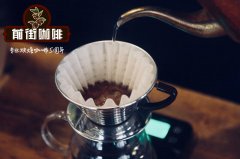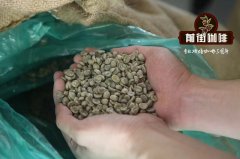How to drink Yemeni Matali coffee? What kind of coffee is Matali coffee?

Professional coffee knowledge exchange more coffee bean information please follow the coffee workshop (Wechat official account cafe_style)
As long as Yemeni coffee is immediately reminiscent of thick and wild sun-dried beans, Yemeni coffee farmers have been planting according to the ancient methods handed down by their ancestors, because Yemen's rugged terrain is not easy to grow and there is little rainfall. Therefore, Yemeni coffee farmers choose terraces or lowlands for planting, and choose areas that are not easily exposed to strong sun exposure, while most Yemeni farmers are poor and cannot use pesticides. Almost all of them are cultivated naturally and organically.
When did you start growing coffee in Yemen?
Although there are many theories, the arguments of the 13th century are the most persuasive. According to the legend in the book the Origin of Coffee written by Abdar Qadir, an Arab Islamist, coffee seems to have been drunk since the 13th century. In addition, the ancient city of Zabid, which was listed on the World Heritage site of UNESCO in 1993, was not only in Yemen from the 13th century to about 16th century, but also the center of education and religion in the Islamic region around the Indian Ocean. The expanded Islamic power of the 13th century went deep into Ethiopia, and most believe that coffee spread from Ethiopia at that time. According to the existing literature, the etymology of the word "coffee" (Kafuwa) began in the 13th century.
[production status]
Ninety-five percent of Yemeni coffee production comes from the high mountains that extend from the south to the north in the western part of the country. Yemeni coffee is produced on platforms made on the surface of precipitous bald mountains (terraces, near 1700 meters above sea level) and farmland along dry valleys (1500 meters above sea level). Since there is no guarantee of a stable source of water, all of them are treated by the traditional non-washing method, that is, the sun. In addition, the original Arabica is also the characteristic of the original traditional variety, which produces a very unique fruit flavor of mocha, and it also has a deep-rooted popularity in Japan.
[variety]
Yemeni coffee production is concentrated in the western mountain areas; there are mataru, Ismaili, Harazi, Raymah, Yaffaa and other varieties. According to the results of a survey conducted by government agencies, the varieties in Yemen are divided into the following four categories. Dawairi (4m high, large round cherry fruit) and Tufahi (2Mel 6m, larger cherry fruit shaped like an apple). ), Udaini (a small round cherry fruit with a height of 4m), and Buraa'i (a cherry fruit with a height of 1m and a smaller oval shape). Udayni, which seems to have the most in common, is regarded as the prototype of Yemeni varieties.
[circulation]
The operators in Sana'a, the capital, focus on buying raw materials from various producing areas in the country, and they use these raw materials that cannot be specified, and refer to these selected grades as "Shanani" (which means "Shanani"). And then by the exporters to add their own brands. In Japan, it is customary to refer to Yemeni coffee as "Mokha Mattari", but in Yemen it is referred to as an adjective for coffee beans harvested in that place. For example, the coffee harvested in the Bani Matar area is collected by Matali and Leima, which is called "Laimi". Saudi Arabia dominated the main export destinations, followed by the United States and Japan. The European evaluation of Yemeni coffee is not very good, and the circulation is very low.
The following is Qianjie Coffee's advice on Yemeni Coffee:
1. Filter cup: V60
two。 Water temperature: 88 degrees
3. Degree of grinding: small Fuji degree of grinding 4
4. Baking degree: medium baking
5. Steaming time: 25 seconds
Flavor: balanced, chocolate, long-lasting caramel sweetness
Qianjie Coffee suggestion: 15g powder, 4 grinding of small Fuji ghost tooth cutter, V60 filter cup, 88-89 degrees water temperature, 30g water injection for the first time, 25 s steaming, water injection to 104g water cut off, wait for the amount of water in the powder bed to go down to half and then water injection, slow water injection until 220g water, 5 grams at the end, no water powder ratio at 1:15, extraction time about 2:00 (calculated after stewing)
Important Notice :
前街咖啡 FrontStreet Coffee has moved to new addredd:
FrontStreet Coffee Address: 315,Donghua East Road,GuangZhou
Tel:020 38364473
- Prev

Columbiana exquisite model rookie how to make coffee sour _ hand coffee how to choose beans
Professional coffee knowledge exchange more coffee bean information please follow the coffee workshop (Wechat official account cafe_style) Model students from the southernmost province of Colombia, select specific small farms or farms in Nalinglong area, manually select the best quality and Supremo grade coffee raw beans, because of these strict screening mechanisms, so the annual output of model coffee is only
- Next

How to drink coffee by hand in Paladastolima Manor, Colombia
Professional coffee knowledge exchange more coffee bean information please follow the coffee workshop (Wechat official account cafe_style) Colombian coffee Paradastoma micro-batch sun-flavor description: citrus, papaya, caramel, medium acidity, medium alcohol thickness. You know, the best baristas in Colombia, they all prefer Tolima Tolima coffee beans, and LA
Related
- Detailed explanation of Jadeite planting Land in Panamanian Jadeite Manor introduction to the grading system of Jadeite competitive bidding, Red bid, Green bid and Rose Summer
- Story of Coffee planting in Brenka region of Costa Rica Stonehenge Manor anaerobic heavy honey treatment of flavor mouth
- What's on the barrel of Blue Mountain Coffee beans?
- Can American coffee also pull flowers? How to use hot American style to pull out a good-looking pattern?
- Can you make a cold extract with coffee beans? What is the right proportion for cold-extracted coffee formula?
- Indonesian PWN Gold Mandrine Coffee Origin Features Flavor How to Chong? Mandolin coffee is American.
- A brief introduction to the flavor characteristics of Brazilian yellow bourbon coffee beans
- What is the effect of different water quality on the flavor of cold-extracted coffee? What kind of water is best for brewing coffee?
- Why do you think of Rose Summer whenever you mention Panamanian coffee?
- Introduction to the characteristics of authentic blue mountain coffee bean producing areas? What is the CIB Coffee Authority in Jamaica?

